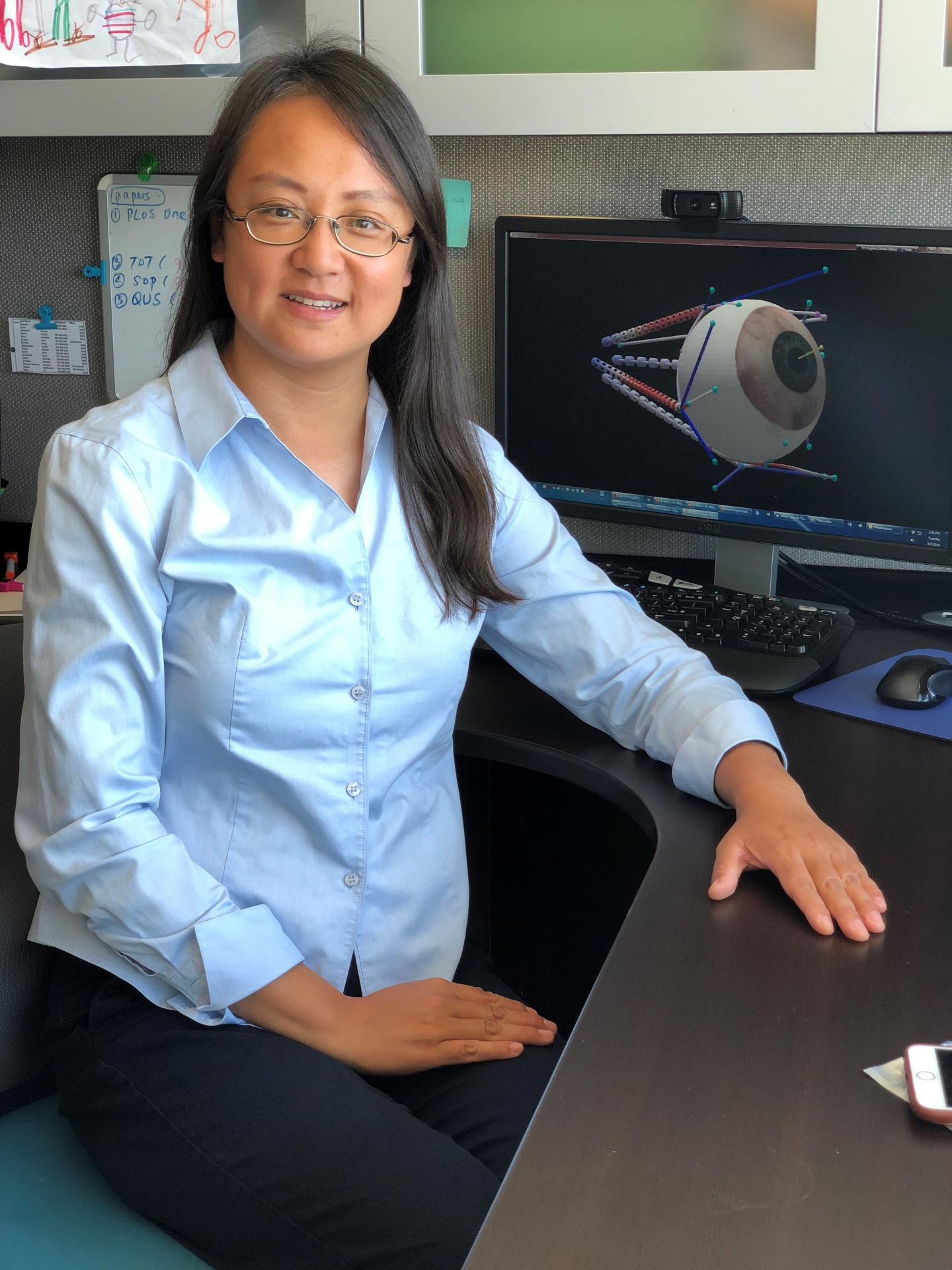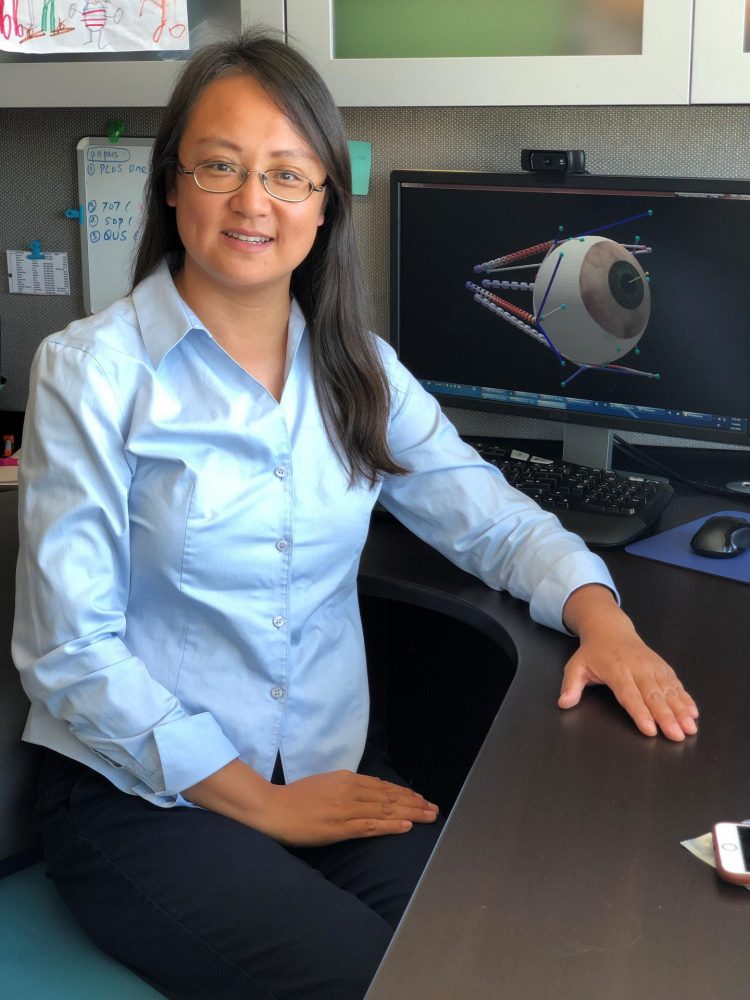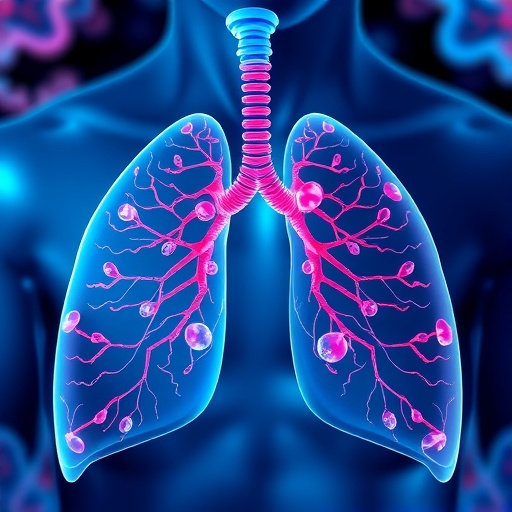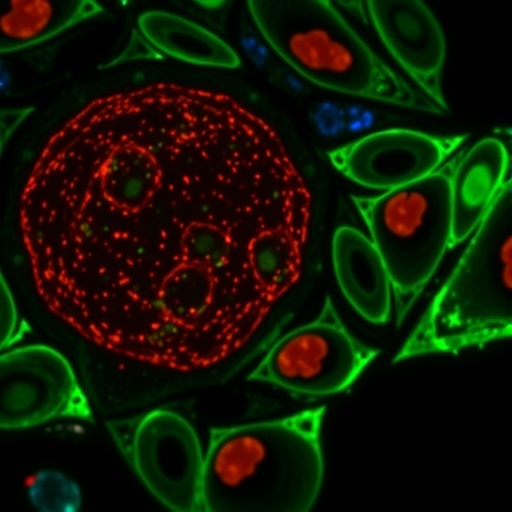
Credit: Courtesy of Mason Engineering
When Mason Engineering’s Qi Wei sees people with vision troubles, she knows there is more to the problem than meets the eye.
She researches strabismus, which is misaligned crossed eyes. “When people have strabismus, their eyes don’t line up to look at the same place at the same time,” says Wei, an associate professor in the Department of Bioengineering.
One or both eyes may turn in, out, up or down. It’s a prevalent problem, especially with children. It affects 18 million people in the United States. “Strabismus can be debilitating because people with the condition develop double vision, blurred vision, eyestrain, or other symptoms impairing daily activities.”
Wei and three other principal investigators from different universities are creating a data-driven computer model of the eye for diagnosing and treating strabismus with almost $1.8 million in funding from the National Institutes of Health. “We hope the neuro-biomedical model we are developing will help doctors better determine how best to treat strabismus,” she says.
Each eye has six extraocular muscles that control eye position and movement. Strabismus occurs when these muscles don’t function properly due to complex neurological, anatomical, or perceptual abnormalities, she says.
Some people are born with the condition, while others develop it later due to medical conditions or other reasons, Wei says.
It’s complicated and hard to diagnose and treat effectively, she says. Typically, the condition is treated with surgery that manipulates one or more extraocular muscles. Generally, surgeons rely on experience and intuition to decide the best surgical treatment, she says.
Although a few computer models for the treatment of the condition exist, Wei and colleagues are fine-tuning their model, which will overcome others’ critical limitations. Using clinical data from 50 strabismic patients who’ve been operated on, the team will test hypotheses that they hope will advance the knowledge on treating two common types of strabismus.
The model will include clinical information from patients’ MRIs, the surgical procedures used to correct the condition, and surgical outcomes. Co-investigator Joseph Demer, an ophthalmologist and biomedical engineer with the Stein Eye Institute at UCLA, operates on patients with strabismus. He provides the data and assists with clinical interpretations of the model.
Mike Buschmann, chair of Mason’s bioengineering department says, “Dr. Wei uses a sophisticated approach to modeling eye movements and worked closely with the clinical community to get one step closer to solving some very significant problems in human vision. The future of her research holds great promise and is a shining example of collaboration between a bioengineer and a clinician.”
Wei, a computer scientist by training, says the biomedical field “lets you work on a real problem and make it better.”
She understands the fear and frustration of having eye issues. “I don’t have strabismus, but I’m very nearsighted. Without glasses, I can’t walk outside. I’ve had glasses since I was seven years old.
“I am still nervous when I am tested on the vision chart,” she says. “I hope that one day people can be treated more effectively taking advantage of scientific tools.
“Strabismus is complicated, and computer models might be flawed, but someone has to come up with a breakthrough,” she says.
###
Media Contact
Martha Bushong
[email protected]
Original Source
https:/





